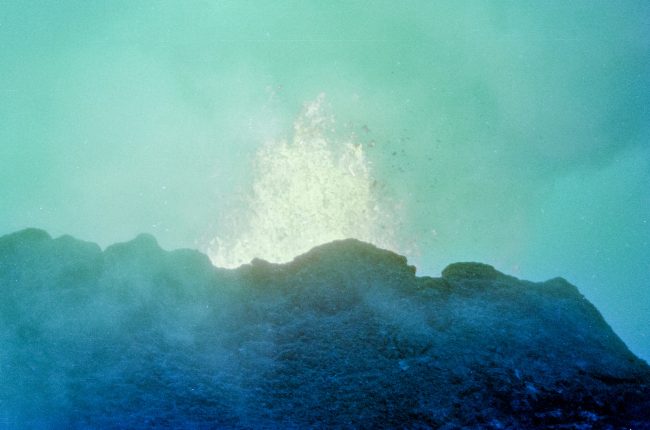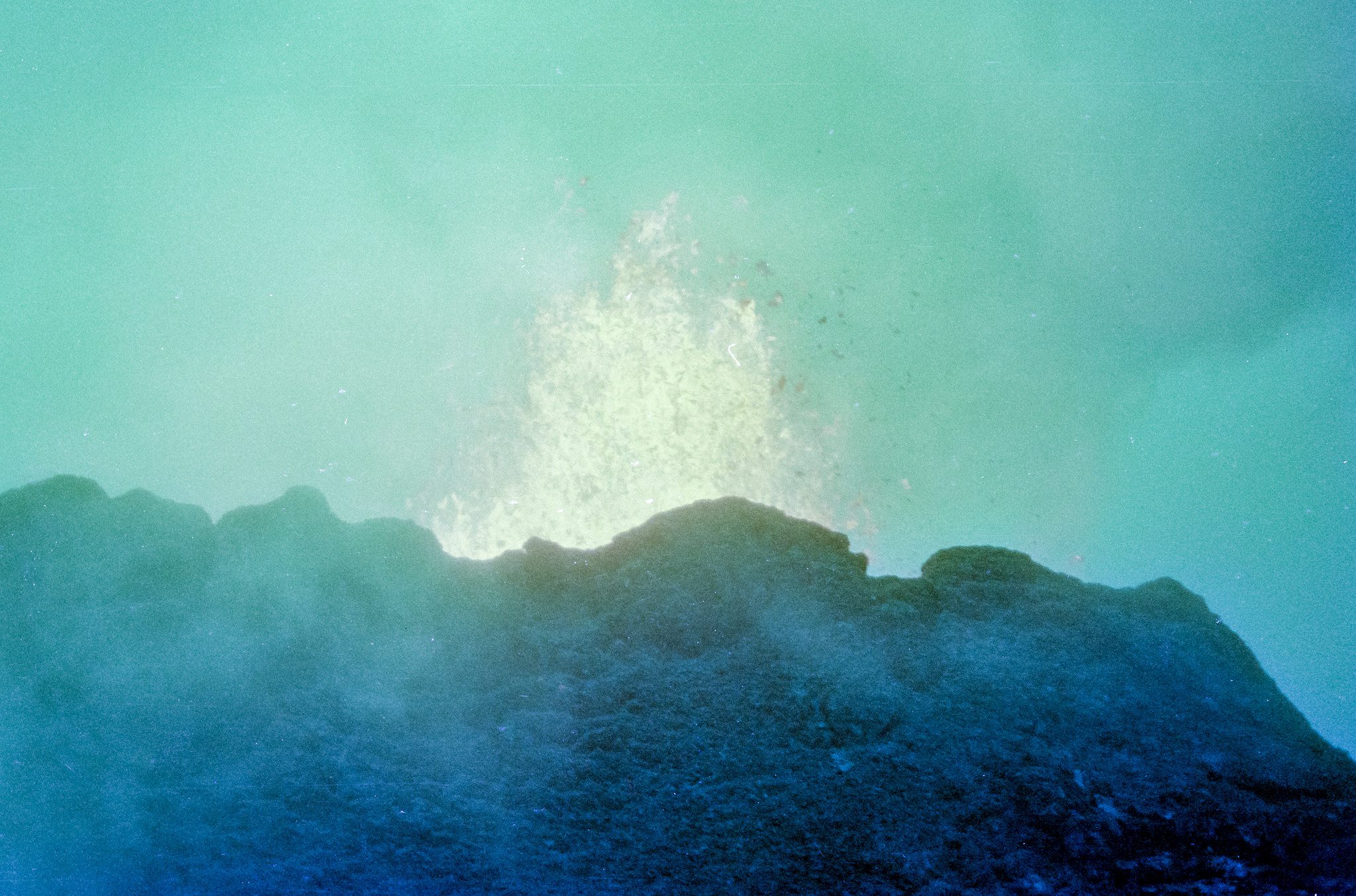
A team of British researchers were conducting a marine survey when they came upon an erupting underwater volcano, which are notoriously difficult to study.
In collaboration with the University of the West Indies Seismic Research Centre, scientists from several universities in the U.K. were aboard the R.R.S. James Cook research ship. They were retrieving ocean-bottom seismometers for a research project and there was an alarm message. The underwater volcano is called, Kick ‘em Jenny and she is one of the Caribbean’s most active.
It is rare for scientists to be able to observe an erupting volcano, but they were able to get close enough to safely record the “immediate aftermath of the eruption, including the gas coming out of the central cone.”
April 2017 was the first time Kick ‘em Jenny’s eruption was recorded directly. Scientists were able to gather “unprecedented data on what this kind of volcanic activity actually looks like.”
Between 1939 and 2001, Kick ’em Jenny has erupted at least 12 times and it is still active. Scientists learned that “the volcano goes through a cycle of lava ‘dome’ growth, followed by landslides that trigger a collapse.” Similar cycles have been seen in others in the Caribbean like on Montserrat. Kick ’em Jenny is part of the Antilles Volcanic Arc.
If Kick ‘em Jenny was on land, it would have been watched and studied in detail with satellites and local equipment mounted onto her cone. However, it is underwater and difficult to monitor because the electromagnetic energy emitted from the satellites cannot penetrate the water, and it is too difficult to setup the localized instruments. Therefore, scientists know little about the growth and behavior of underwater volcanoes.
The most famous studied underwater volcanoes are those that have formed islands.
The research learned about Kick ’em Jenny’s observed eruption was published on March 14, 2018, in Geochemistry, Geophysics, Geosystems. The report states that the volcano was named after the turbulent waters nearby.
Kick ‘em Jenny is just under five miles from Grenada. It was discovered in 1939, when a 0.2-mile column of ash and dust was observed rising from the ocean.
Richard Robertson, the director of the SRC, says this study has provided useful insights into the activity and evolution of the volcano. The research projects enabled the agency responsible for monitoring Kick ‘em Jenny to better quantify the existing model to help develop strategies to manage future eruptions.
The mission was funded by the NOAA’s Office of Ocean Exploration to investigate and evaluate the evolution of the volcano and the relationship to the environment surrounding the hydrothermal venting in the area.
The research project began on March 9, 2003. Kick ’em Jenny has been surveyed 11 times since 1962, but this is the most detailed study to date.
Researchers worked 12-hour shifts using equipment, such as a multi-beam sonar, a remotely operated vehicle, low intensity air guns, and conductivity-temperature-depth devices to conduct their survey.
They explored aspects of the eruption style of the underwater volcano, retrieved evidence of magnetic evolution, hazards, the influence of the biological activity surrounding the vents of the volcano, and potential hydrothermal mineralization. The first multi-beam scans were taken on March 12, and it showed there were new features of Kick ‘em Jenny. It looked as if there was a new cone nested within a larger horseshoe-shaped depression that was formed by slope failure. Scientists also discovered several smaller craters.
In an interview conducted after the survey, Professor Haraldur Sigurdsson, chief scientist, stated that there are no known historical eruptions to confirm there are more volcanoes surrounding Kick ’em Jenny. He believes they are extinct. Scientists will use chemical analysis to determine if the rocks are separate from the volcano or not. If they have the same chemical compound as Kick ’em Jenny, they are fed by the same source. Further investigation is required.
Scientists have already tentatively named one of the possible newly found underwater mountains Kick ‘em Jack. However, currently there is no confirmation the craters were live volcanoes.
By Jeanette Smith
Sources:
ZME Science: Kick-‘em-Jenny: Scientists get rare chance to study volcano as it’s erupting
Science Daily: Underwater volcano behavior captured by timely scientific expedition
NOAA: Kick’em Jenny Submarine Volcano
Image Courtesy of Roger Goodman’s Flickr Page – Creative Commons License



